#native plants species
Explore tagged Tumblr posts
Text
June 29
I went on the native plants walk! It was a fantastic time. So much to tell, but here's a pic post of the first portion.
Cheney Lake itself is low, but because they've allowed the beavers to do their thing, the "swamp" doesn't reflect the drought. It was AMAZING. Good jorbs, beavers!


I was fascinated by all the pristine duckweed.

Found some wild raspberries!

Shrek definitely lives here.






And last but not least, some sparkly-duckweed.
"I-I know what you are."
"Say it."
"You're a vampire-swamp."
#native plants#native plants species#botany#horticulture#trailerparktombombadil#trailer park tom bombadil#nature
17 notes
·
View notes
Text

jewels of opar
traditional ink, digital color. 2024
#artists on tumblr#illustration#nature art#bird art#nature#ink drawing#traditional art#bird#anhinga#pink flowers#floral#botanical#botanist#natural art#plants#native species
4K notes
·
View notes
Text

1K notes
·
View notes
Text
So this is a really creative solution to a pernicious ecological problem! The short version is that arid ecosystems like deserts are quite fragile. For example, many have soil that is covered in a thin biocrust that can be damaged just by walking or driving on it. And because life needs water to grow and recover, these super-dry ecosystems may not be able to repair a footprint or tire track for over a century.
However, arid ecosystems are often some of the least understood because they can be difficult to access. And they suffer from P.R. issues because deserts are often seen as "bad" ecosystems full of death and nothingness, and because we do legitimately want to avoid the desertification of other native habitats.
In order to raise awareness and appreciation of these landscapes, biological surveys that tally the living beings found there help show how biodiverse they can be. And when we know more about how abundant or scarce a given species there is, it gives us more impetus to protect them, especially those that are at risk of extinction.
These paramotorists were able to fly across Peru's lomas (coastal fog deserts), which primarily receive scant amounts of moisture from mist. They collected plant samples to take back to scientists, carefully recording where they were found. And because they were able to fly long distances, they could minimize the amount of time their feet were on the ground and therefore minimize their impact on the local ecology.
At a time where it seems every interaction between motorized technology and nature is a negative one, this is a pleasant departure. yes, of course we wish we weren't in a place where we have to be worried about increasing extinction and other ecological woes. But let's take the wins where we can; the morale boost is crucial to being able to keep looking toward a better future.
#desert#lomas#ecology#botany#plants#native plants#science#scicomm#nature#endangered species#extinction#environment#conservation#biology#hopepunk#good news#paramotor#paragliding
492 notes
·
View notes
Text
"Next Monday [6/17/24] is the start of National Pollinator Awareness Week, and one Colorado advocacy group is hosting a flower planting drive to rewild Colorado’s meadows, gardens, and just maybe, its children too.
Created by constitutional amendment in 1992, Great Outdoors Colorado (GOCO) is a state-funded independent board that invests a portion of Colorado Lottery proceeds to help preserve and enhance the state’s parks, trails, wildlife, rivers, and open spaces.
This year, GOCO’s offshoot Generation Wild is distributing over 100,000 free packets of wildflower seeds to collection points at museums, Denver Parks and Rec. offices, and libraries all over the state to encourage kids and families to plant the seeds in their backyards.
The Save the Bees! initiative aims to make the state more beautiful, more ecologically diverse, and more friendly to pollinators.
According to a new report from the Colorado Department of Natural Resources, 20% of Colorado’s bumblebees are now at risk of extinction. Even in a small area like a backyard, planting wildflowers can make a positive impact on the local ecosystem and provide native bees with a healthy place to live.
“The Western Bumblebee population has declined in Colorado by 72%, and we’re calling on kids across Colorado to ‘bee’ the change,” said GOCO Executive Director Jackie Miller.
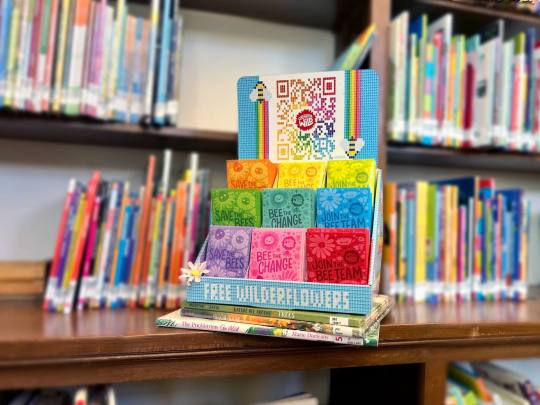
Named after Generation Wild’s official mascot “Wilder,” the Wilderflower Seed Mix was developed in partnership with Applewood Seed Co. and packets are now available for pickup at designated partner sites including more than 80 Little Free Library boxes.
By distributing 100,000 Wilderflower packets, Generation Wild is providing more than 56 million seeds for planting in every nook and cranny of the state. All seeds are regionally-native to Colorado, which is important for sustaining the living landscape of bees, birds, and other animals.
Additionally, by using flower species adapted to the Mile High climate, landscapers and gardeners need to use less water than if they were tending non-native plants.
“Applewood Seed Co. was excited to jump in and help Generation Wild identify a seed mix that is native to the Colorado region and the American West, containing a diversity of flower species to attract and support Colorado’s pollinator populations,” stated Norm Poppe, CEO of Applewood Seed Co. “We hope efforts like this continue to educate the public on pollinator conservation and the need to protect our native bees and butterflies.”
Concluding her statement Miller firmly stated that children grow up better outside, and if you or a parent you know agree with her, all the information on how to participate in Save the Bees! can be found here on their website, including a map showing all the local pickup points for the Wilderflower Seed Packets."
-via Good News Network, June 13, 2024
#wildflowers#wild flowers#colorado#bees#native bees#entomology#insects#save the bees#pollinators#bumblebees#bumble bee#i love bees#biodiversity#native plants#urban gardening#gardening#ecology#conservation#endangered species#wildlife conservation#enviromentalism#good news#hope#hope posting#solarpunk#denver#boulder colorado#colorado springs#libraries#public libraries
481 notes
·
View notes
Text
Good News - June 8-14
Like these weekly compilations? Tip me at $Kaybarr1735! And if you tip me and give me a way to contact you, at the end of the month I'll send you a link to all of the articles I found but didn't use each week!
1. Rare foal born on estate for first time in 100 years

“The Food Museum at Abbot's Hall in Stowmarket, Suffolk, is home to a small number of Suffolk Punch horses - a breed considered critically endangered by the Rare Breeds Survival Trust. A female foal was born on Saturday and has been named Abbots Juno to honour the last horse born at the museum in 1924. [...] Juno is just one of 12 fillies born so far this year in the country and she could potentially help produce more of the breed in the future.”
2. The cement that could turn your house into a giant battery

“[Scientists] at Massachusetts Institute of Technology (MIT) have found a way of creating an energy storage device known as a supercapacitor from three basic, cheap materials ��� water, cement and a soot-like substance called carbon black. [... Supercapacitators] can charge much more quickly than a lithium ion battery and don't suffer from the same levels of degradation in performance. [... Future applications of this concrete might include] roads that store solar energy and then release it to recharge electric cars wirelessly as they drive along a road [... and] energy-storing foundations of houses.”
3. New road lights, fewer dead insects—insect-friendly lighting successfully tested

“Tailored and shielded road lights make the light source almost invisible outside the illuminated area and significantly reduces the lethal attraction for flying insects in different environments. [...] The new LED luminaires deliver more focused light, reduce spill light, and are shielded above and to the side to minimize light pollution. [... In contrast,] dimming the conventional lights by a factor of 5 had no significant effect on insect attraction.”
4. When LGBTQ health is at stake, patient navigators are ready to help

“[S]ome health care systems have begun to offer guides, or navigators, to get people the help they need. [... W]hether they're just looking for a new doctor or taking the first step toward getting gender-affirming care, "a lot of our patients really benefit from having someone like me who is there to make sure that they are getting connected with a person who is immediately going to provide a safe environment for them." [... A navigator] also connects people with LGBTQ community organizations, social groups and peer support groups.”
5. Tech company to help tackle invasive plant species

“Himalayan balsam has very sugary nectar which tempts bees and other pollinators away from native plants, thereby preventing them from producing seed. It outcompetes native plant species for resources such as sunlight, space and nutrients. [...] The volunteer scheme is open to all GWT WilderGlos users who have a smartphone and can download the Crowdorsa app, where they can then earn up to 25p per square meter of Balsam removed.”
6. [Fish & Wildlife] Service Provides Over $14 Million to Benefit Local Communities, Clean Waterways and Recreational Boaters
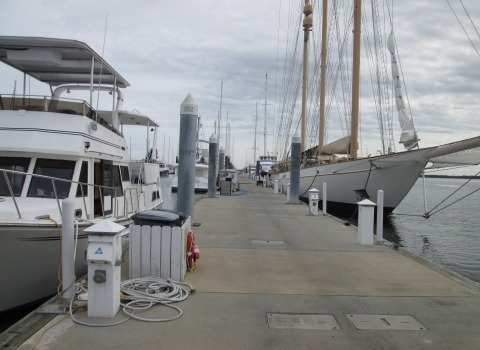
“The U.S. Fish and Wildlife Service is distributing more than $14 million in Clean Vessel Act grants to improve water quality and increase opportunities for fishing, shellfish harvests and safe swimming in the nation’s waterways. By helping recreational boaters properly dispose of sewage, this year’s grants will improve conditions for local communities, wildlife and recreational boaters in 18 states and Guam.”
7. Bornean clouded leopard family filmed in wild for first time ever

“Camera traps in Tanjung Puting National Park in Indonesian Borneo have captured a Bornean clouded leopard mother and her two cubs wandering through a forest. It's the first time a family of these endangered leopards has been caught on camera in the wild, according [to] staff from the Orangutan Foundation who placed camera traps throughout the forest to learn more about the elusive species.”
8. Toy library helps parents save money 'and the planet'

“Started in 2015 by Annie Berry, South Bristol's toy library aims to reduce waste and allow more children access to more - and sometimes expensive - toys. [...] Ms Berry partnered with the St Philips recycling centre on a pilot project to rescue items back from landfill, bringing more toys into the library. [...] [P]eople use it to support the environment, take out toys that they might not have the space for at home or be able to afford, and allow children to pick non-gender specific toys.”
9. Chicago Receives $3M Grant to Inventory Its Trees and Create Plan to Manage City’s Urban Forest

“The Chicago Park District received a $1.48 million grant [“made available through the federal Inflation Reduction Act”] to complete a 100% inventory of its estimated 250,000 trees, develop an urban forestry management plan and plant 200 trees in disadvantaged areas with the highest need. As with the city, development of the management plan is expected to involve significant community input.”
10. Strong Public Support for Indigenous Co-Stewardship Plan for Bears Ears National Monument
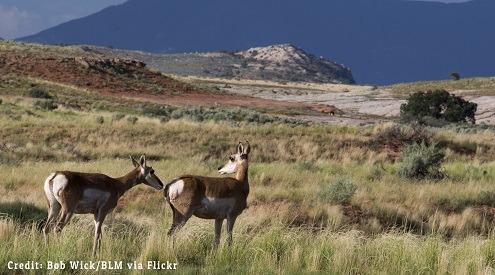
“[The NFW has a] plan to collaboratively steward Bears Ears National Monument to safeguard wildlife, protect cultural resources, and better manage outdoor recreation. The plan was the result of a two-year collaboration among the five Tribes of the Bears Ears Inter-Tribal Coalition and upholds Tribal sovereignty, incorporates Traditional Ecological Knowledge, and responsibly manages the monument for hunting, fishing, and other outdoor recreation while ensuring the continued health of the ecosystem.”
June 1-7 news here | (all credit for images and written material can be found at the source linked; I don’t claim credit for anything but curating.)
#hopepunk#good news#nature#horse#rare breed#energy storage#clean energy#biodiversity#street lights#lgbtq#health#native plants#invasive species#incentive#fws#water#fishing#swimming#clouded leopard#indonesia#library#kids toys#interdependence#bristol#uk#funding#native#outdoor recreation#animals#wildlife
753 notes
·
View notes
Text



rosa rugosa...the inside story...
191 notes
·
View notes
Text
Note to new foragers;
while you are learning about the species you want to harvest, also learn what sustainable harvesting looks like. Learn about invasive species management, and agroecology. A lot of people start with the book Braiding Sweetgrass, by Dr Robin Wall Kimmerer. It is approachable, and covers the Honorable Harvest really well. The Poor Proles Almanac podcast and Substack are both incredible sources of information as well.
In general, tho, you should start by knowing this:
- If a species is native, and especially if it is rare on the landscape, do what you can to encourage it. Don’t over harvest, clear away invasives around it, save and spread its seeds. Maybe even hand pollinate it if needed.
- If a species is not native, feel free to harvest much more of it. Discourage its spread, but you don’t necessarily need to remove every single one you see. For a very small select few non native species, a little bit of spreading can even be okay. But be sure you know what you are doing. In general, it is better to remove a non native species than to let it stay. Keep native seeds on you to replace them with. I carry around little dime bags of seeds.
- if a species is Invasive (not native & choking out native species) remove as much as you can without damaging the local ecology. For foraging this might mean you harvest a ton of yellow charlock, even more than you need, because you see it choking out wild lettuce. This is a good thing to do (at least where I am). Because the charlock will overtake everything. But if you start managing in other ways, like tarping or tilling or spraying, keep in mind that oftentimes the medicine can be worse than the disease. If you spray a field of charlock you don’t get wild lettuce, you get more charlock.
Anyways, good luck!
553 notes
·
View notes
Text
honestly if you're planning a new perennial garden, especially a native plant garden, especially if you're unfamiliar with plants, when you are in the nursery/garden center to select plants for that garden, you absolutely need to turn off the consumerist part of your brain that decides when something is of a quality worth buying.
most species native plants in pots look like scraggly, scrappy bits of greenery. they may not stand upright. they may not bloom in the pot. they certainly won't get their mature height in the pot. they might be a little or very ugly. sometimes they are ugly because nurseries are bad at caring for them (trying to force a taprooted long day growing species with mature heights of several feet tall to be ready to sell in a pot on mother's day is um.. uh) but sometimes, they are just not selectively bred to look good in pots.
most perennials in full bloom with tidy, compact growth that you see lined up neatly on the shelves in garden centers are cultivars that have been increasingly selectively bred for first year blooming. consumers only want to buy things that look good on the shelf, and this isn't any different for plants. if they're from a bigger grower, they have probably also been treated with growth regulators to keep them from toppling over on the shelves.
neither of those are signs of a plant you shouldn't buy necessarily, but it still means you won't have a good idea of what that plant could look like in your landscape. you're buying a simulacra of that plant. maybe it will look the same next year but also, a lot of the common impulse buy, nice to look at on the shelf perennials are short-lived perennials that have also been bred to bloom longer and go to seed more slowly, if they go to seed at all. those babies ain't coming back.
i lost the plot of this post but point being, as someone who professionally grows perennials, the species native plants are always always a hard sell even when we have people begging for species native plants or complaining that local garden centers only stock nativars. because even nature-loving plant shoppers are programmed to think of anything they buy as a series of product specifications.
when you're buying a herbaceous perennial that you intend to come back in your garden every year, you are buying the root system, not the flowers or even the leaves.
#if you want species natives you gotta learn to germinate them yourself#or frequent specialized native plants growers and hobbyists#anyway#don't be afraid to carefully take a plant out of a pot in the nursery and check roots lol
393 notes
·
View notes
Text
Help me decide?
I'm having a botanical/art crisis. This may be my last year ever in CA as we are likely getting PCSed(Permanent Change of Station) soon. To honor the state where I spent most of my life, I want to do a series of southern California plant illustrations. I'm torn however. I originally wanted to do native CA plants, but after photographing, cataloguing, and researching many of the plants I had selected during my time hiking around socal, I've found many of them are not actually native. This begs the question. Should I do justice to the reality of what I've seen and enjoyed during my time living here by including non native plants and still calling them CA plants, or do I offer an idealized version of native CA plants even if it's not what the reality is when you are in the wild.
#botany#art#discussion#send halp#tbh my biggest concern is the botany buffs out there getting upset with me for calling invasive/non native species CA plants
83 notes
·
View notes
Text
'Tism won again! 🎉
Re:that post about invasive mints and the addition about outcompeting them with related plants, you can look up native lamiaceae species if you're still worried about replacing one invasive species with another! If you live in the USA, uswildflowers.com lets you search by state, and if you wanna narrow your search results even more, look up [plant family] native to your ecoregion!

There are different-level ecoregional maps for each state too--

--and some species only occur in the wild within unique subregions. For example, there's a Brazos mint, or rattlesnake flower, that only grows in sandy soil within the post oak belt in Texas, and the post oak savannahs only show up within the east central Texas plains on a level IV-inclusive map.
And I dunno about anyone else, but there's something special about meeting some of your more exclusive neighbors.
#mint#lamiaceae#invasive species#native plants#ecoregion#environmentalism#gardening#media#website#tldr#etc
361 notes
·
View notes
Text
July 20
It was rainy and cool when I went to the farmer's market, so I had to snap shots of the garden looking fresh and damp as I left 🤣


I'm not sure if I'm devoted or cruel because of my insistence that this guy keep going. Planted in May, quickly got hit with some pestilence. It's making a nice little comeback.

My herbs: patchouli, thyme, rosemary, chives




My newest addition: Missouri Goldenrod.

I've been working on the BFFs yard all day. It's looking absolutely TASTY, my friends. Update on that later.
#trailer park tom bombadil#gardenblr#gardening#trailerparktombombadil#gardeners on tumblr#flower garden#gardeners of tumblr#mobile home garden#trailer park garden#container gardening#horticulture#native plants species
7 notes
·
View notes
Text

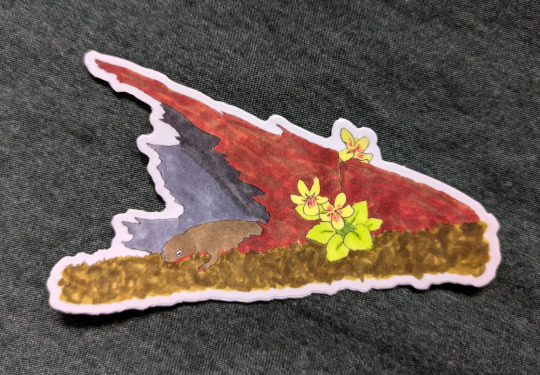
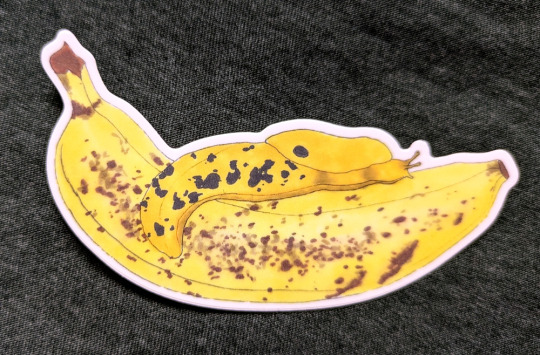


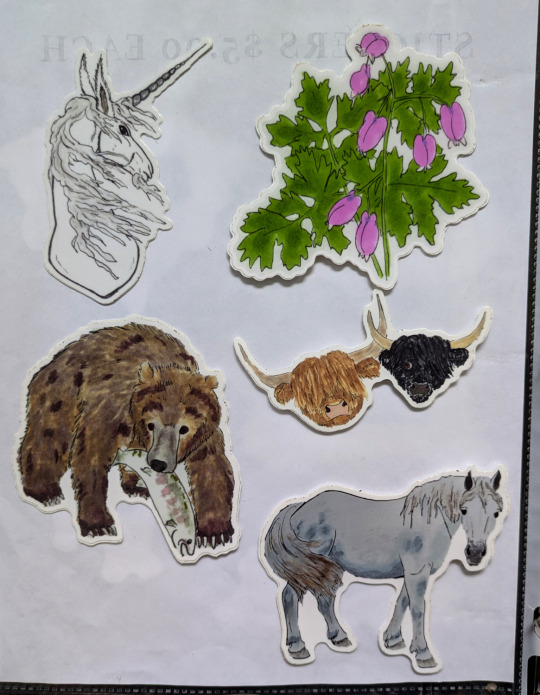

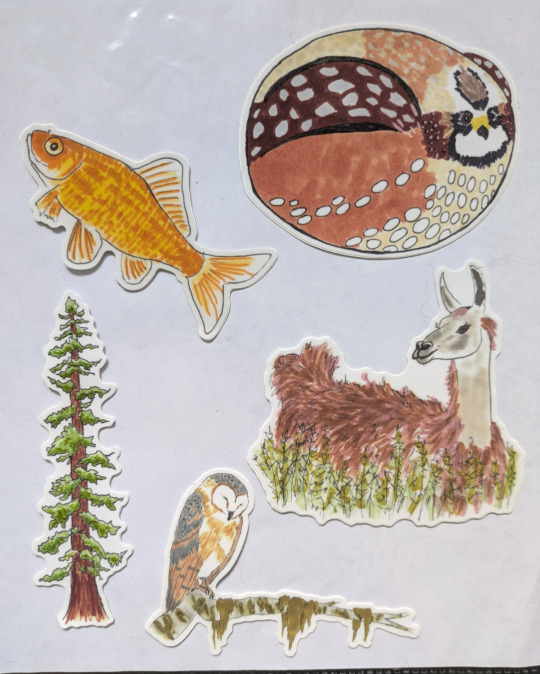
Hey, all! I haven't had a chance to list my three latest stickers--a chum salmon, a banana slug (on a banana!) and a rough-skinned newt in a log. But you can get them directly from me--all my 4" vinyl indoor/outdoor stickers are $5 each plus shipping, and I do ship internationally. Just drop me a line at whishthound(at)gmail(dot)com.
#stickers#wildlife#animals#plants#fungi#nature#nature art#vinyl stickers#bumper stickers#art#native plants#native species#salmon#fish#banana slug#slugs#newt#rough skinned newt#amphibians#herps#salamander#birds#wildflowers#nature aesthetic#naturecore
28 notes
·
View notes
Text
How Non-Native Plants Are Contributing to a Global Insect Decline
The impact of introduced plants on native biodiversity has emerged as a hot-button issue in ecology. But recent research provides new evidence that the displacement of native plant communities is a key cause of a collapse in insect populations and is affecting birds as well...
#non-native plants#invasive species#environment#conservation#insect decline#insect#insects#entomology#biodiversity#animals#nature#botany#plants#non-native invasive species
1K notes
·
View notes
Text
Okay. So you know how industrial agriculture overuses synthetic fertilizers loaded with nitrogen to make up for the decades of soil degradation that intensive farming practices cause? So not only does a lot of this fertilizer end up as runoff in our waterways every time it rains, but while it's still on land it's messing with the surrounding ecology, particularly plants.
See, nitrogen normally exists primarily in our atmosphere, and most organisms can't absorb atmospheric nitrogen, even though it's a crucial nutrient. However, some soil bacteria are capable of drawing this nitrogen in and converting it to a form of ammonia accessible to plants. These bacteria can be found in little nodules of many plants' roots, and make the nitrogen available to their hosts in return for a nice safe place to live. When these nitrogen-fixing plants shed leaves or other parts, or die entirely, the nitrogen in their tissues is then released into the local ecosystem as they decay.
However, when we started supercharging farmland and gardens with tons of extra nitrogen through fertilizers, we threw off the entire nitrogen cycle. Plants native to a given ecosystem have evolved to tolerate a certain balance of nutrients, to include some that may be naturally scarce, and when the nutrient balance suddenly shifts significantly, it causes a lot of upset. With more nitrogen filtering through nearby ecosystems, and those downstream, nitrogen-fixing plants are suddenly losing their competitive edge, and are becoming less common in these places. Over time, they can become locally extinct, breaking whatever bonds they had with other species in the ecosystem, which often leads to even more ecological unraveling.
So you see, more fertilizer isn't always the answer. When engaging in habitat restoration efforts in many parts of the United States, it's important to work with the native soil instead of adding a lot of amendments. Those amendments can actually make it easier for invasive weeds to get a roothold because they often come from places with richer soil, or are simply more able to make the most of the excess nutrients to grow faster and out-compete native plants. Adding too much nitrogen, whether intentionally or as a byproduct of agriculture, makes it even tougher for native ecosystems to thrive in disturbed areas adjacent to farms. On the other hand, making sure your restoration site has native nitrogen-fixers and other pioneer plants helps set the stage for long-term success, while making conditions less favorable to nutrient-hungry invasive species.
We already had plenty of reason to curb the overuse of synthetic fertilizers; this study just adds another argument in that regard.
#plants#botany#plantblr#farming#agriculture#sustainability#permaculture#nature#ecology#restoration ecology#habitat restoration#pollution#environment#conservation#native plants#native species#invasive species#ecosystems#science#scicomm#biodiversity
141 notes
·
View notes
Text
It would be nice if humanity could reach a point where landscaping like this is not okay. I walk past this area frequently, and they regularly nuke everything with roundup and remove all the detritus. Think of all the arthropods and other wildlife this wasted space could support. I understand having fire buffers around buildings, but this attitude isn’t exclusive to plots close to buildings…

I also understand many native plants can be more difficult to grow, but California poppies (in the Bay Area) are not one of them. I’m sure other regions have similarly easy to grow species. Even a few plants can make a huge difference.
We as a culture need to stop it with the blasé attitude about the destruction of nature, particularly bugs (ie invertebrates). “Kill it with fire” is a shitty and ignorant way to react to a tiny animal that is merely trying to exist. The vast majority of bugs are not out to get you and are, in fact, terrified of you (rightfully so in many cases).
Would you squish a baby bird? Didn’t think so.
#rant#that article yesterday set me off lol#it’s been bothering me for a long time though#ecology#ecological destruction#bugs#don’t squish bugs#sustainable landscaping#plant native#native species#nature#biodiversity#conservation#roundup#stop it
68 notes
·
View notes